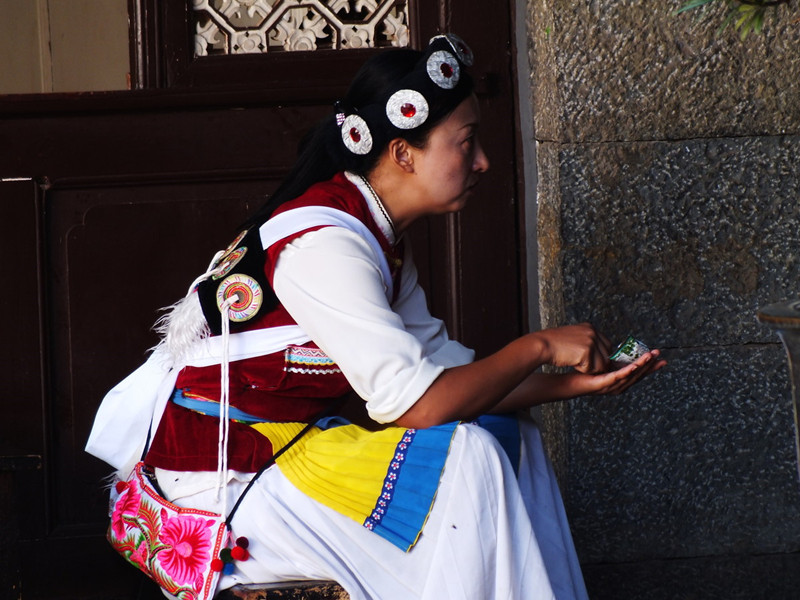
Naxi Ethnic Minority
Naxi ethnic minority is one of the 56 ethnic groups in China and one of the ethnic groups unique to Yunnan. Naxi is unique in art, its poetry, painting, sculpture, music and dance art are famous at home and abroad. Naxi culture is deeply influenced by Han culture.
Distribution of Naxi Ethnic Minority
The Naxi ethnic group is an ethnic minority group in southwest China. Its settlement is mainly distribution in Lijiang and its neighboring areas at the border of Yunnan, Sichuan and Tibet. Yunnan province is the main distribution province of Naxi ethnic minority. Most Naxi people live in Lijiang and Diqing in northwest Yunnan, the rest are distributed in other counties and cities in Yunnan, as well as Yanyuan, Yanbian and Muli counties in Sichuan, and a few are distributed in Markam county of Tibet. Autonomous Areas
Naxi Ethnic Towns
Sanba Naxi Ethnic Town Daan Yi and Naxi Ethnic Town
Naxi ethnic minority is famous for their singing and dancing. Representatives of Naxi music include Lijiang ancient music, Lijiang Dongjing music and so on. “Lijiang ancient music” is the artistic crystallization of diverse cultures of Naxi and Han. “Lijiang ancient music” is composed of “Baisha fine music”, Lijiang dongjing music and Huangjing music (Huangjing music is now lost). Baisha fine music is one of the few large classical orchestras in China.
Cultural Heritages of Naxi Ethnic Minority
Baisha Xiyue Music of Naxi Ethnic Minority Remeicuo Song and Dance of Naxi Minority Dongba Dance of Naxi Ethnic Minority Nishou Dance of Naxi Ethnic Minority
Inheritors
He Yuxin Yang Guilian He Linyi He Guowei He Guoyao Shu Yinjia Xie Songshan Xi Aniu He Jixi He Jikuan He Jigui He Xun He Zhiben
Festivals and Activities of Naxi Ethnic Minority
Hada Bumper Harvest Culture Festival Mule and Horse Trade Fair (July Fair) Danhui (Beginning of Summer) Festival Torch Festival of Naxi Ethnic Minority March Fair or Dragon King Temple Fair Dongshan Temple Fair of Naxi Ethnic Minority Jiandan (February 8th) Festival of Naxi Minority Eryueba (February 8th) Festival Bangbanghui Festival of Naxi Ethnic Minority Sanduo Festival of Naxi Ethnic Minority Heaven Worshipping Ceremony of Naxi Minority Dongba Gathering of Naxi Ethnic Minority
Keep Reading
Yuhu Village Naxi Ethnic Culture Protection Area in Baisha Town of Yulong County, Lijiang

 7 Days GolfingTour
7 Days GolfingTour
 8 Days Group Tour
8 Days Group Tour
 8 Days Yunnan Tour
8 Days Yunnan Tour
 7 Days Shangri La Hiking
7 Days Shangri La Hiking
 11 Days Yunnan Tour
11 Days Yunnan Tour
 6 Days Yuanyang Terraces
6 Days Yuanyang Terraces
 11 Days Yunnan Tour
11 Days Yunnan Tour
 8 Days South Yunnan
8 Days South Yunnan
 7 Days Tea Tour
7 Days Tea Tour
 8 Days Muslim Tour
8 Days Muslim Tour
 12 Days Self-Driving
12 Days Self-Driving
 4 Days Haba Climbing
4 Days Haba Climbing
 Tiger Leaping Gorge
Tiger Leaping Gorge
 Stone Forest
Stone Forest
 Yunnan-Tibet
Yunnan-Tibet
 Hani Rice Terraces
Hani Rice Terraces
 Kunming
Kunming
 Lijiang
Lijiang
 Shangri-la
Shangri-la
 Dali
Dali
 XishuangBanna
XishuangBanna
 Honghe
Honghe
 Kunming
Kunming
 Lijiang
Lijiang
 Shangri-la
Shangri-la
 Yuanyang Rice Terraces
Yuanyang Rice Terraces
 Nujiang
Nujiang
 XishuangBanna
XishuangBanna
 Spring City Golf
Spring City Golf
 Snow Mountain Golf
Snow Mountain Golf
 Stone Mountain Golf
Stone Mountain Golf










